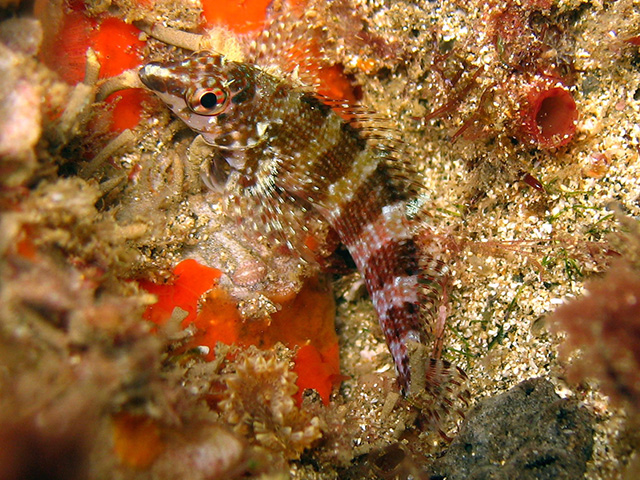| Labrisomidae (Labrisomids) |
| 3.46 cm SL (male/unsexed); 3.23 cm SL (female) |
|
reef-associated; marine; depth range 11 - 13 m |
| Eastern Central Atlantic: Cape Verde Islands. |
|
Dorsal spines (total): 20-20; Dorsal soft rays (total): 10-10; Anal spines: 2-2; Anal soft rays: 19-19. This species is distinguished by the following characters: D XX+10; A II+19; pectoral 14 soft rays; ventrals three soft rays; the length of shortest pelvic ray is more than half the length of the longest pelvic ray; lateral line scales 55-56; presence of prepectoral scales which are considerably smaller than scales on body; belly scaled except breast area; colour pattern dominated by 6 vertical bars on the body, delineated in straight vertical lines; these bands barely enter the dorsal fin; transparent dorsal fin membranes (Ref. 98055). |
| Collected using anaesthetic (quinaldine or clove) oil sprayed into horizontal cracks in rock faces or below large stones at about 10-13 m depth. Additional animals were seen when overturning big stones at 10-16 m and one individual was photographed at night, resting on open rock in water only 3 m deep (Ref. 98055). |
|
Not Evaluated (N.E.) Ref. (130435)
|
| harmless |
Source and more info: www.fishbase.org. For personal, classroom, and other internal use only. Not for publication.

